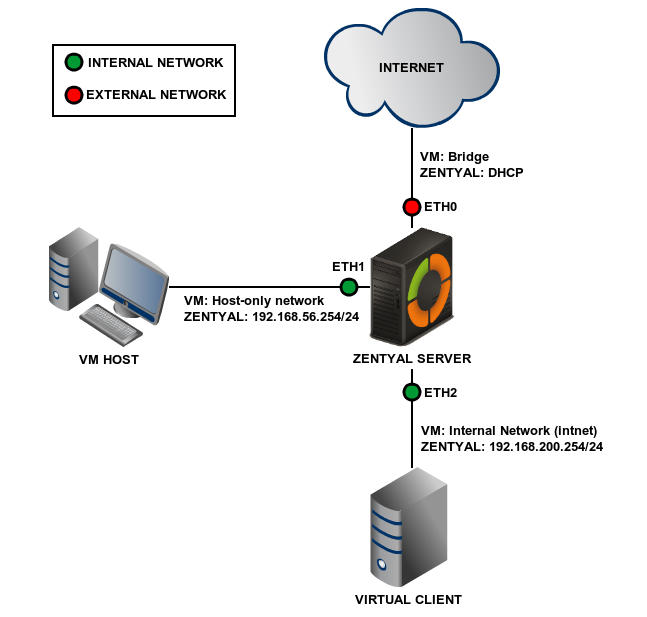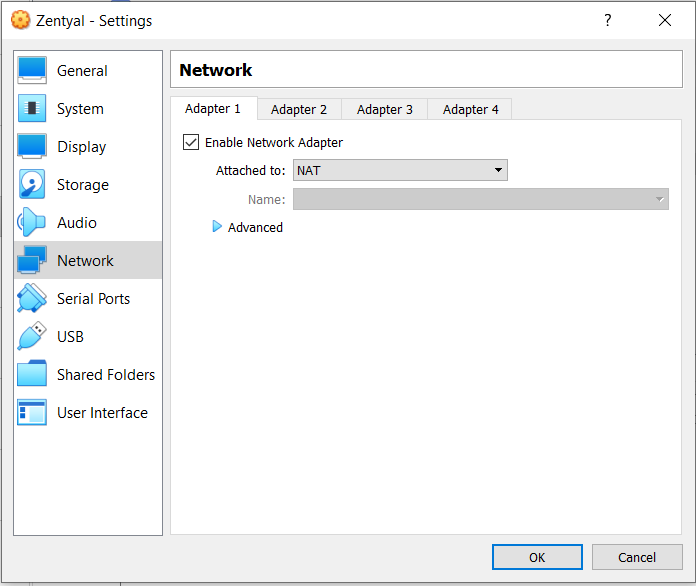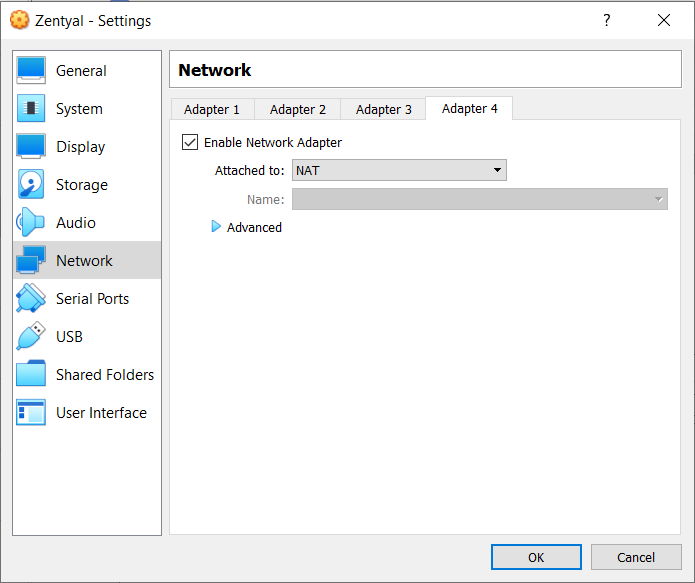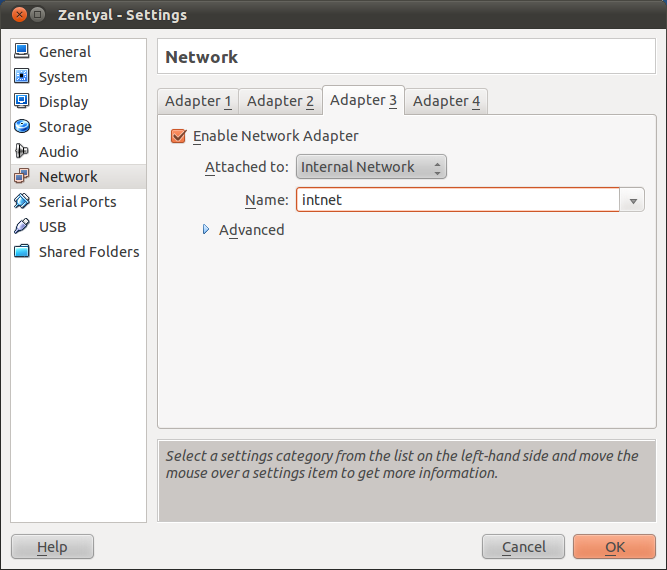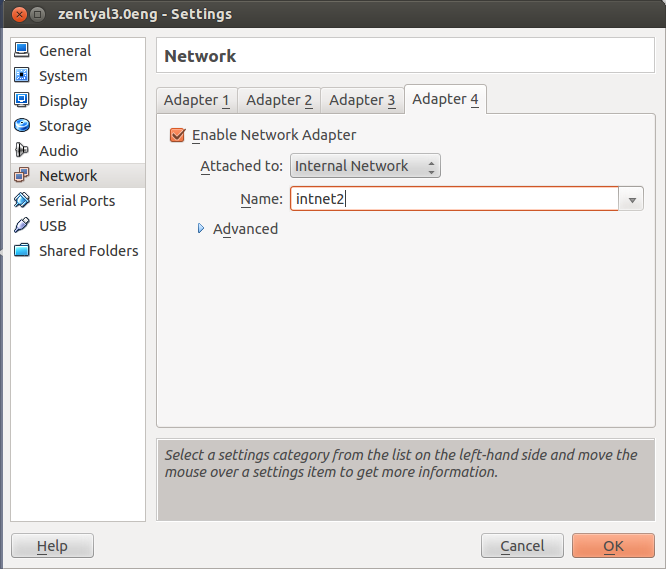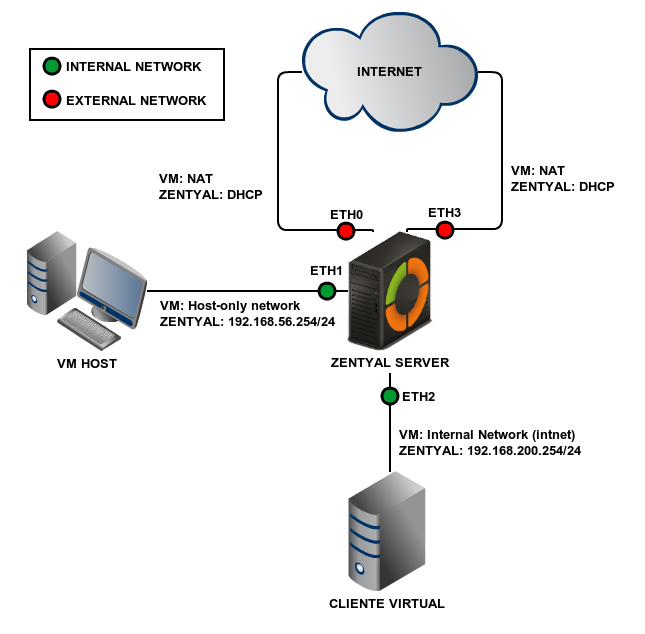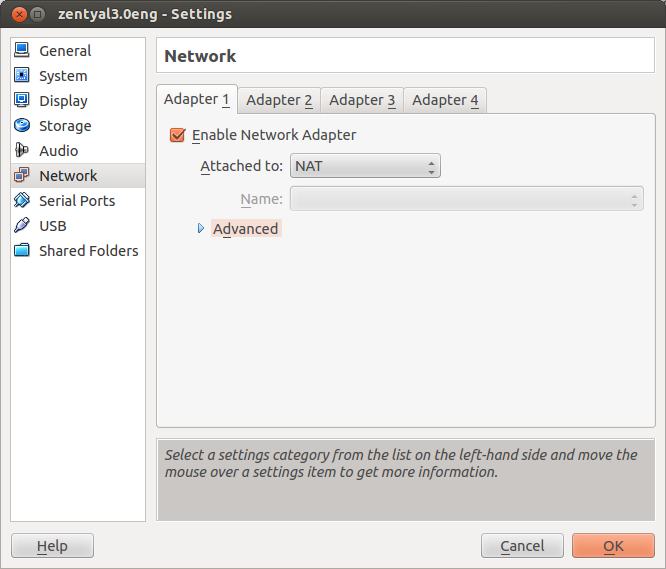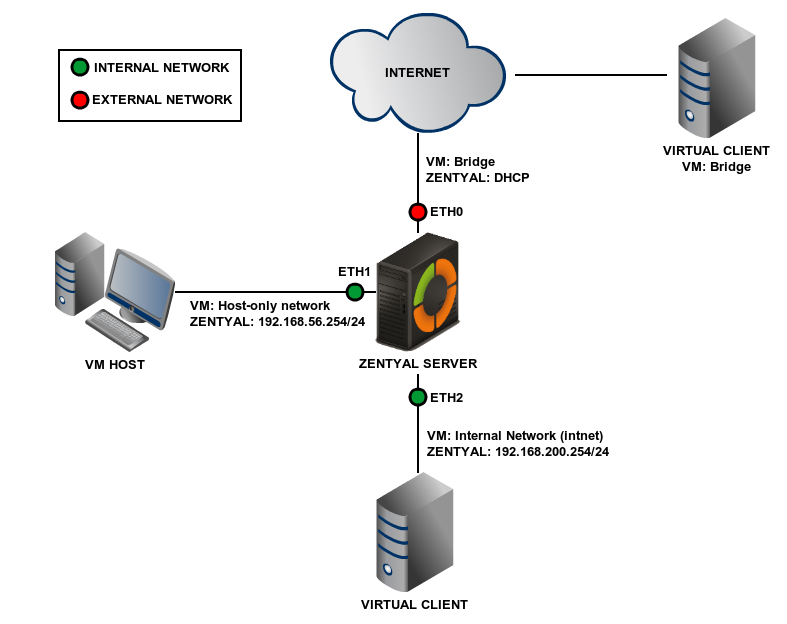Appendix B: Advanced network scenarios¶
Let’s see how to deploy network scenarios somewhat more complex than just a virtual machine with Internet access.
Scenario 1: Base scenario, Internet access, internal networks and host network¶
This first scenario consists of a virtualized Zentyal server with three
network interfaces. The first interface (typically eth0) will connect the
server to the Internet, using a Bridged Adaptor connection with DHCP
resolution. The second one (eth1) is a Host-Only interface type,
connecting with the host (real) machine. This network will work on the
vboxnet0 interface, that is created by default. The third interface
(eth2) will connect the server with a virtual client, using an Internal
network type connection.
The first network will connect the server to the Internet and the address
will be assigned by DHCP. The second network will use the vboxnet0
interface, using the 192.168.56.0/24 range. This network is considered
internal and Zentyal will use it to connect with the Host. The third
network will use the intnet internal interface in VirtualBox and it
will be also considered internal for Zentyal, using the 192.168.200.0/24
range.
In this scenario and the following scenarios, VM refers to the
configuration of the interface established in the virtual machine manager
(VirtualBox in this case) and ZENTYAL refers to the configuration of the
interface from the point of view of your Zentyal server.
From Settings –> Network, on the virtual machine on which you intend to install Zentyal, connect the interfaces to a Bridged Adapter. You also need to choose the (real) physical interface that will provide Internet connection.
Set the second interface as a Host-Only Adapter, associated to the
vboxnet0 interface.
Set the third interface as Internal Network, named intnet. Name is
important in VirtualBox, if two hosts have different names for their
internal networks, they will not be connected internally by VirtualBox.
Now you can reboot your Zentyal server and configure its interfaces. You can use any operating system for the client machine, although we recommend Ubuntu Linux (try the lighter versions like Xubuntu or Lubuntu) for its ease of use and because it is free to download and install.
Scenario 2: Multiple internal networks¶
This scenario is identical to the previous scenario, but you add an extra
virtual network using the range 192.168.199.0, called intnet2.
This interface is internal and will be created in a similar way to that of the previous scenario, but associated with the fourth interface.
Scenario 3: Multiple gateways¶
The next scenario is targeted at deployments or exercises where you have more than one gateway, which allows you to take advantage of the Zentyal traffic balancing, multigateway rules, wan-failover capabilities, etc.
To do this, you modify the first network interface, changing it to NAT. You enable the fourth network interface in VirtualBox and set the same configuration.
Then you will configure eth0 and eth3 as External and with the method DHCP. This way, from the point of view of your Zentyal server, there are two different gateways that can be used to reach Internet.
Scenario 4: Base scenario + external client¶
This scenario is similar to scenario 1, but you will have an extra client that does not access Internet through Zentyal, like the client located under eth2, but can contact Zentyal by using an external network. This scenario can be useful to check VPN connectivity, or just to check the access from Internet to any of the services offered by Zentyal and allowed in the section ‘Filtering rules from External networks to Zentyal’.
The recommend configuration is to set up the network interface of the client as ‘Network Bridge’, so that Zentyal can reach it through the external network. You have to take into account that Zentyal does not reply to ping in external networks unless explicitly allowed in the firewall.
Scenario 5: Multi tenancy¶
In this scenario you will duplicate scenario 1 to deploy an environment with multiple locations, each one managed by its own Zentyal server. This is suitable for scenarios with VPN tunnels, several Active Directory DCs or both.
It’s important to make sure that both the additional client and the eth1 interface of the additional Zentyal server are joined to intnet2 and not intnet network.
